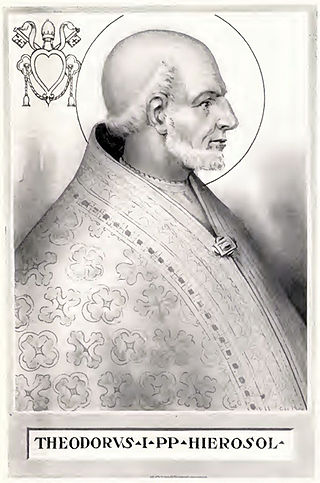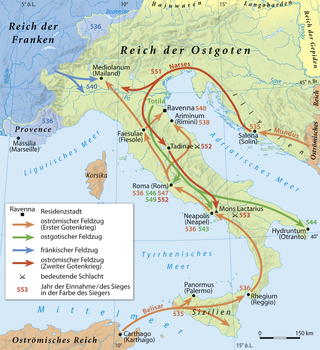The 640s decade ran from January 1, 640, to December 31, 649.
The 550s decade ran from January 1, 550, to December 31, 559.
The 570s decade ran from January 1, 570, to December 31, 579.
The 580s decade ran from January 1, 580, to December 31, 589.
The 590s decade ran from January 1, 590, to December 31, 599.

Year 552 (DLII) was a leap year starting on Monday of the Julian calendar. The denomination 552 for this year has been used since the early medieval period, when the Anno Domini calendar era became the prevalent method in Europe for naming years.

Year 554 (DLIV) was a common year starting on Thursday of the Julian calendar. The denomination 554 for this year has been used since the early medieval period, when the Anno Domini calendar era became the prevalent method in Europe for naming years.
Year 538 (DXXXVIII) was a common year starting on Friday of the Julian calendar. At the time, it was known as the Year of the Consulship of Iohannes without colleague. The denomination 538 for this year has been used since the early medieval period, when the Anno Domini calendar era became the prevalent method in Europe for naming years.
Year 551 (DLI) was a common year starting on Sunday of the Julian calendar. The denomination 551 for this year has been used since the early medieval period, when the Anno Domini calendar era became the prevalent method in Europe for naming years.

Year 641 (DCXLI) was a common year starting on Monday of the Julian calendar. The denomination 641 for this year has been used since the early medieval period, when the Anno Domini calendar era became the prevalent method in Europe for naming years.

Year 642 (DCXLII) was a common year starting on Tuesday of the Julian calendar. The denomination 642 for this year has been used since the early medieval period, when the Anno Domini calendar era became the prevalent method in Europe for naming years.

Narses was, with Belisarius, one of the great generals in the service of the Byzantine Emperor Justinian I during the Roman reconquest that took place during Justinian's reign. Narses was a Romanized Armenian. He spent most of his life as an important eunuch in the palace of the emperors in Constantinople.

At the Battle of Taginae in June/July 552, the forces of the Byzantine Empire under Narses broke the power of the Ostrogoths in Italy, and paved the way for the temporary Byzantine reconquest of the Italian Peninsula.

Teia, also known as Teja, Theia, Thila, Thela, and Teias, was the last Ostrogothic King of Italy. He led troops during the Battle of Busta Gallorum and had noncombatant Romans slaughtered in its aftermath. In late 552/early 553, he was killed during the Battle of Mons Lactarius. Archaeological records attesting to his rule show up in coinage found in former Transalpine Gaul.

The Battle of Mons Lactarius took place in 552 or 553 AD during the Gothic War waged on behalf of Justinian I against the Ostrogoths in Italy.

The Gothic War between the Byzantine Empire during the reign of Emperor Justinian I and the Ostrogothic Kingdom of Italy took place from 535 to 554 in the Italian peninsula, Dalmatia, Sardinia, Sicily, and Corsica. It was one of the last of the many Gothic wars against the Roman Empire. The war had its roots in the ambition of the Byzantine emperor Justinian I to recover the provinces of the former Western Roman Empire, which the Romans had lost to invading barbarian tribes in the previous century, during the Migration Period.
Ishbara Qaghan was the first son of Issik Qaghan, grandson of Bumin Qaghan, and the sixth khagan of the Turkic Khaganate (581–587).
The Battle of the Volturnus, also known as the Battle of Casilinum or Battle of Capua, was fought in 554 between an army of the Eastern Roman Empire and a combined force of Franks and Alemanni. The Byzantines, led by the old eunuch general Narses, were victorious.
Aligern or Aligernus was an Ostrogoth military leader, active in the Gothic War (535-554). By the end of the war, Aligern had joined the Byzantine army. The main sources about him are Procopius and Agathias.

The conquest of the Western Turks, known as the Western Tujue in Chinese sources, was a military campaign in 655–657 led by the Tang dynasty generals Su Dingfang and Cheng Zhijie against the Western Turkic Khaganate ruled by Ashina Helu. The Tang campaigns against the Western Turks began in 640 with the annexation of the Tarim Basin oasis state Gaochang, an ally of the Western Turks. Several of the oasis states had once been vassals of the Tang dynasty, but switched their allegiance to the Western Turks when they grew suspicious of the military ambitions of the Tang. Tang expansion into Central Asia continued with the conquest of Karasahr in 644 and Kucha in 648. Cheng Zhijie commanded the first foray against the West Tujue, and in 657 Su Dingfang commanded the main army dispatched against the Western Turks, while the Turkic generals Ashina Mishe and Ashina Buzhen led the side divisions. The Tang troops were reinforced by cavalry supplied by the Uyghurs, a tribe that had been allied with the Tang since their support for the Uyghur revolt against the Xueyantuo. Su Dingfang's army defeated Helu at the battle of Irtysh River.









